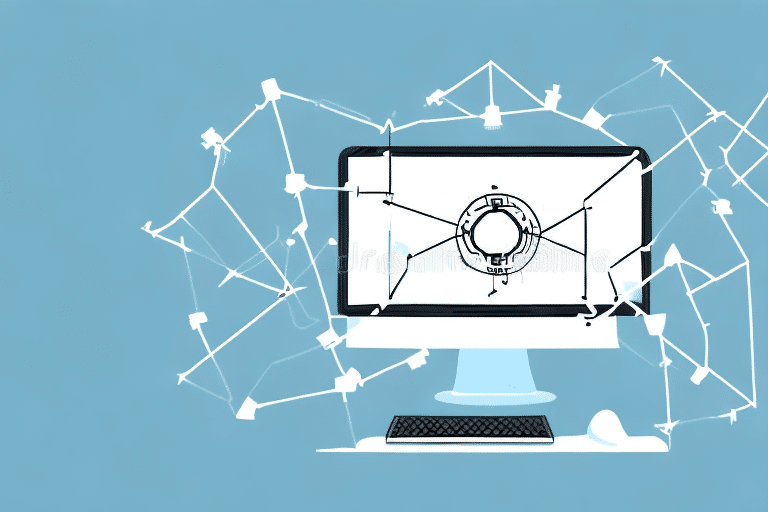Introduction to Integrating DHL eCommerce with HubSpot
As e-commerce continues to grow, businesses require robust shipping and tracking systems to manage their operations efficiently. Integrating DHL eCommerce with HubSpot, a leading CRM and marketing platform, can significantly enhance your e-commerce capabilities. This integration allows for seamless data synchronization, automated processes, and improved customer experiences, positioning your business for scalable growth.
Benefits of Integrating DHL eCommerce with HubSpot
Combining DHL eCommerce with HubSpot offers numerous advantages that streamline operations and enhance customer interactions:
- Seamless Data Syncing: Automatically synchronize customer data and order information between DHL eCommerce and HubSpot, minimizing manual data entry and reducing errors.
- Automated Shipping Processes: Automate shipping label generation, tracking updates, and notifications, saving time and increasing operational efficiency.
- Enhanced Marketing Campaigns: Utilize shipping and delivery data to create targeted marketing campaigns, improving engagement and conversion rates.
- Centralized Metrics Tracking: Monitor key performance indicators such as shipping costs, delivery rates, and customer satisfaction within HubSpot’s analytics tools.
- Improved Customer Experience: Provide customers with real-time tracking information and accurate delivery estimates directly through your HubSpot portal.
Step-by-Step Guide to Connecting DHL eCommerce with HubSpot
Integrating DHL eCommerce with HubSpot is straightforward. Follow these steps to establish the connection:
- Log into HubSpot: Access your HubSpot account and navigate to the integrations section by clicking on the settings gear icon.
- Search for DHL eCommerce Integration: In the integrations marketplace, use the search bar to locate the DHL eCommerce integration.
- Connect the Integration: Click on the "Connect" button to begin the integration process.
- Authorize the Integration: Enter your DHL eCommerce account credentials to authorize HubSpot to access your shipping data.
- Configure Settings: Set up your integration preferences, including default shipping rates, delivery options, and notification settings.
- Test the Integration: Create a test order to ensure that shipping and tracking information sync correctly between DHL eCommerce and HubSpot.
- Finalize and Activate: Once testing is successful, activate the integration to start managing your e-commerce shipping and tracking through HubSpot.
For detailed instructions, refer to HubSpot’s official integration documentation [HubSpot Integrations].
Best Practices for Optimizing the Integration
To maximize the benefits of integrating DHL eCommerce with HubSpot, implement the following best practices:
- Automate Workflows: Set up automated workflows and email notifications for order confirmations, shipping updates, and delivery notifications to enhance efficiency and customer communication.
- Monitor Key Metrics: Regularly track metrics such as delivery times, shipping costs, and customer satisfaction to identify areas for improvement.
- Leverage Customer Data: Use the integrated data to create personalized marketing campaigns that target customers based on their shipping and delivery preferences.
- Optimize for Mobile: Ensure that your website and HubSpot portal are mobile-friendly to cater to the increasing number of customers shopping on mobile devices.
- Offer Incentives: Consider offering free shipping or other incentives to encourage customers to choose DHL eCommerce as their preferred shipping option, boosting loyalty and sales.
Automating Shipping and Tracking Processes
Automation is a key advantage of integrating DHL eCommerce with HubSpot, leading to significant time savings and error reduction:
- Automatic Workflows: Configure workflows that trigger actions based on specific events, such as order placement or shipment confirmation, ensuring timely updates and notifications.
- Streamlined Order Processing: Utilize order templates and default shipping rates to expedite the processing and shipping label generation for orders.
- Multi-Carrier Integration: Integrate additional shipping carriers alongside DHL eCommerce within HubSpot to provide flexibility and optimize shipping costs.
- Advanced Reporting: Use HubSpot’s analytics tools to monitor delivery rates, shipping performance, and customer satisfaction, enabling data-driven decision-making.
According to a Statista report, e-commerce sales are projected to reach $6.54 trillion by 2023, highlighting the importance of efficient shipping and tracking systems.
Leveraging Customer Data for Targeted Marketing
The integration provides valuable customer data that can be harnessed to enhance marketing efforts:
- Personalized Campaigns: Create content such as blogs, videos, and email campaigns tailored to customers based on their shipping and delivery information.
- Customer Segmentation: Segment your customer base by geographic location, delivery preferences, or purchase behavior to deliver more relevant marketing messages.
- Enhanced Online Messaging: Utilize shipping data to personalize chatbots, landing pages, and other online interactions, improving user engagement and conversion rates.
Research from Campaign Monitor indicates that personalized emails can improve click-through rates by up to 14% and conversions by 10%.
Managing Orders and Inventory Across Multiple Channels
Efficient management of orders and inventory is crucial for multi-channel e-commerce businesses. The integration simplifies this process:
- HubSpot CRM Integration: Manage customer information from various sales channels, including email, social media, and online marketplaces, within HubSpot’s centralized CRM.
- Inventory Tracking: Use DHL eCommerce’s inventory management features to monitor stock levels, preventing stockouts and overselling.
- Accounting Software Integration: Link HubSpot with your accounting software to track sales and revenue across multiple channels, ensuring accurate financial reporting.
- Comprehensive Reporting: Leverage HubSpot’s reporting tools to analyze sales performance, inventory turnover, and identify growth opportunities.
According to Shopify, businesses that effectively manage multi-channel sales can increase revenue by up to 30%.
Overcoming Challenges and Troubleshooting
While the integration offers significant benefits, businesses may encounter challenges. Here’s how to address common issues:
- Ensure Accurate Credentials: Verify that your DHL eCommerce and HubSpot account credentials are up to date and correctly entered to maintain a stable connection.
- Automate to Reduce Errors: Implement automatic workflows and notifications to minimize manual errors and ensure consistent data flow.
- Understand Capabilities: Familiarize yourself with DHL eCommerce’s capabilities and limitations, such as international shipping restrictions and delivery schedules, to set realistic expectations.
- Regular Monitoring: Continuously monitor key metrics to detect and address potential issues before they escalate.
Troubleshooting Common Sync Errors
- Configuration Checks: Ensure that both DHL eCommerce and HubSpot integrations are correctly configured and authorized.
- Data Consistency: Verify that shipping and tracking data are consistent across both platforms, resolving any discrepancies promptly.
- Update Information: Keep order and inventory information current to prevent sync issues and ensure accurate data representation.
- Seek Support: Contact customer support for DHL eCommerce and HubSpot for assistance with complex errors or persistent issues.
Case Studies: Successful Integration Stories
Numerous businesses have successfully integrated DHL eCommerce with HubSpot, achieving notable improvements in their operations:
- Retailer Case Study: An e-commerce retailer reduced order processing time by 50% and shipping errors by 40% through the integration, enhancing operational efficiency and customer satisfaction.
- Marketing Enhancement: A business utilized DHL eCommerce data within HubSpot to run targeted email campaigns based on delivery locations, resulting in a 20% increase in email engagement and a 25% boost in sales.
- Customer Experience: By integrating DHL eCommerce with HubSpot’s CRM, an e-commerce company managed customer data from multiple channels, leading to a 30% rise in repeat customers through personalized experiences.
These success stories highlight the potential of the DHL eCommerce and HubSpot integration to transform e-commerce operations and drive business growth.
The Future of Shipping and eCommerce Integration
The integration between DHL eCommerce and HubSpot is set to evolve with emerging technologies and market trends. Anticipated advancements include:
- Artificial Intelligence and Machine Learning: Enhanced automation of shipping and tracking processes, predictive analytics for inventory management, and personalized customer interactions.
- Expansion to Emerging Platforms: Integration with new e-commerce platforms and marketplaces such as Shopify, Amazon, and others to broaden market reach.
- Improved International Shipping: Streamlined customs processes and international logistics support, facilitating global business expansion.
- Blockchain and IoT Integration: Enhanced product tracking, data security, and transparency through the adoption of blockchain technology and the Internet of Things.
Staying abreast of these advancements will enable businesses to leverage the full potential of DHL eCommerce and HubSpot integration, maintaining a competitive edge in the dynamic e-commerce landscape.
Conclusion
Integrating DHL eCommerce with HubSpot offers a strategic advantage for e-commerce businesses seeking to optimize their shipping and tracking operations. The synergy between these platforms enables automation, data-driven marketing, and enhanced customer experiences, all of which contribute to increased efficiency and profitability. By following best practices, monitoring key metrics, and overcoming integration challenges, businesses can fully leverage this integration to scale effectively and meet the evolving demands of the e-commerce market.






















